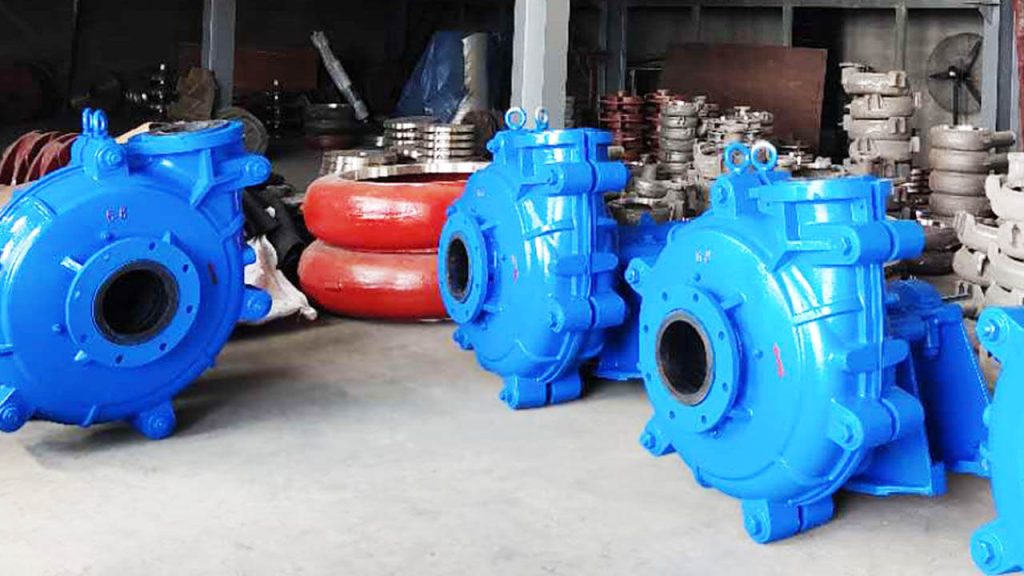High-Speed Solutions For Slurry Pump Operations
The slurry pump is a common and practical auxiliary tool, but it is also troublesome because it sometimes needs help to lift the slurry. The function of slurry pumps is often overlooked, but these powerful machines play a vital role in various industries. One of their key functions is transporting large quantities of liquids mixed with solids, such as mining waste, cement slurries, or industrial by-products. Slurry pumps can efficiently transport these abrasive and dense mixtures using centrifugal force and specially designed impellers and casings without clogging or excessive wear. Maintaining the correct speed is critical for efficient performance in slurry pump operation. However, encountering a slurry pump speed that is too low can present some challenges. So what are the reasons that cause the equipment speed to be too low? How to solve it?

Reasons why the slurry pump speed is too low
- Human factors
It is undeniable that a considerable number of users randomly install another motor because the original motor is damaged, resulting in low flow, low lift, or even no water pumping;
- Drive belt wear
Many large-scale water pumps use belt transmission. Due to long-term use, the transmission belt wears and becomes loose, causing slipping and reducing the water pump’s speed.
- Improper installation
The center distance of the two pulleys is too small, or the two shafts are not too parallel, the tight edge of the transmission belt is installed on it, resulting in the wrapping angle being too small, the diameter calculation error of the two pulleys, and the eccentricity of the two shafts of the coupling-driven water pump is large, etc., which will cause Changes in water pump speed.
- Mechanical failure of the water pump itself
The fastening nut between the impeller and the pump shaft is loose, or the pump shaft is deformed and bent, causing the impeller to move too much. Direct friction with the pump body or bearing damage may reduce the water pump’s speed.
- Power machine maintenance is not recorded
The motor loses magnetism due to burnt windings. Changes in the number of winding turns, wire diameter, and wiring methods during maintenance, or factors such as failure to eliminate the fault during maintenance, will also cause the water pump speed to change.
- If the voltage is too low, the speed of the slurry pump will decrease, resulting in insufficient flow. At this time, the power supply voltage should be checked and adjusted in time.
- The power speed does not match, or the belt slips, causing the speed to be low. Restoring the rated speed, cleaning the grease, and adjusting the belt tightness are recommended.
Speed adjustment solutions
- Control the speed through the belt
Belts drive the slurry pump and motor, and the speed can be adjusted by changing the size of the pulley. This method is widely used in domestic equipment. The disadvantage is that the speed adjustment range is limited, and the speed cannot be adjusted automatically at any time. It would be best to stop the machine to change the pulley and use it. When adjusting the speed, the pump speed is a fixed value and cannot be changed.
- Use a variable frequency motor to adjust the speed
The motor mainly controls the speed of the equipment. As long as the speed of the motor can be adjusted, the speed of the pump will change accordingly. Sometimes, a variable frequency motor is used to adjust the speed, but this type is more expensive and less efficient, so it is not widely used. When the variable frequency motor speed is adjusted, the pump speed is not a fixed value, but the data changes. The pump speed is controlled by adjusting the frequency.
However, it does not mean that high speed is good. The speed directly affects the life of the pump. The lower the pump speed, the lower the speed between the impeller of the pump and the slurry pump; that is, the lower the relative speed with the ore particles, the slower the wear rate of the impeller. In addition, different slurry pumps need to achieve the same flow rate. Generally, when the impeller diameter is large, the rotation speed is low; when the impeller diameter is small, the rotation speed is high. The larger the impeller diameter, the larger its area, and the wear rate will slow down. In addition, the number of mineral particles passing through the unit area of the impeller is reduced, which will also slow down the wear rate and extend the pump’s low-cost service life.
When encountering a low speed of the slurry pump, you must ensure all components are working correctly. Check the pump system for any blockages or obstructions that may impede flow. Next, check the motor and drive system to determine if there is a power issue or mechanical failure. Additionally, analyzing the impeller and adjusting its position can help optimize performance and increase speed. It is important to remember that regular maintenance and monitoring of slurry pumps is critical to preventing problems such as low speed and ensuring efficient operation. Operators can increase pumping efficiency and avoid costly downtime by taking proactive steps and leveraging technology to address these underlying factors causing low slurry pump speeds. Walker will provide ultra-wear-resistant and energy-saving various types of pumps. Contact us to get a quote online!
